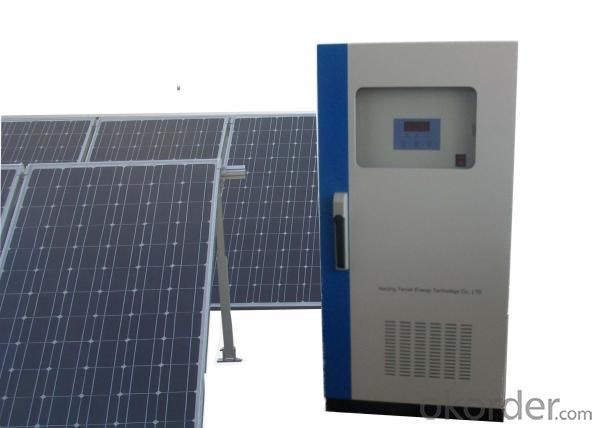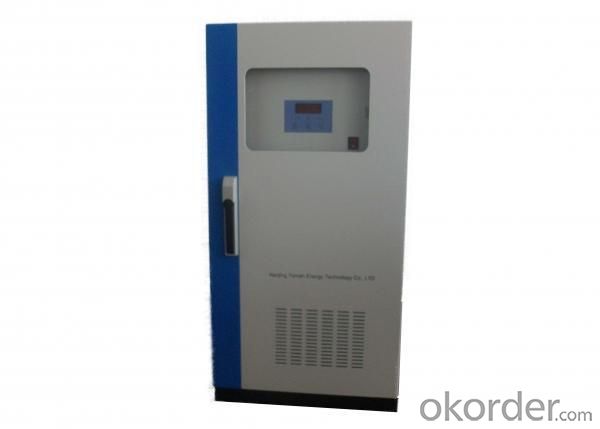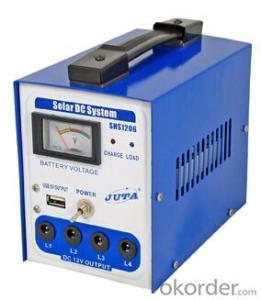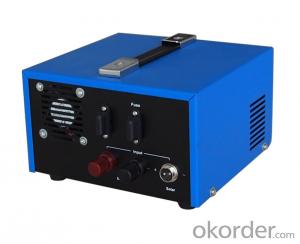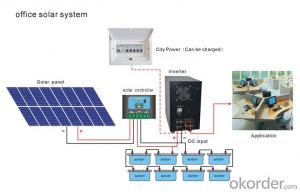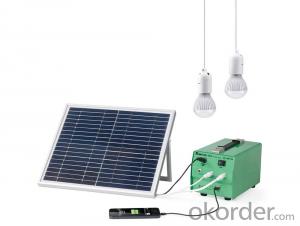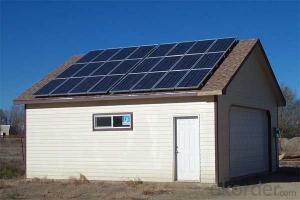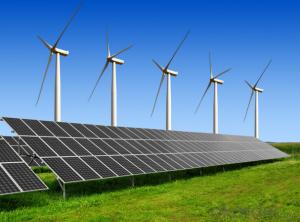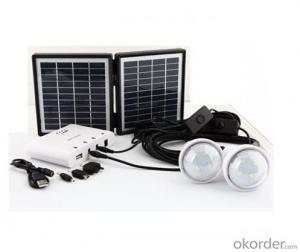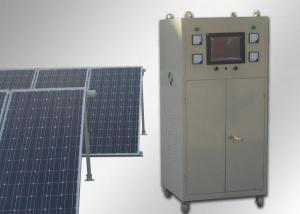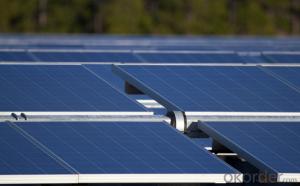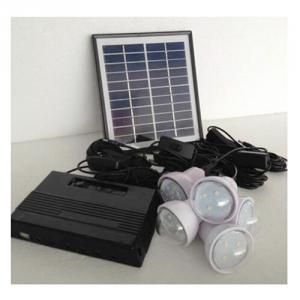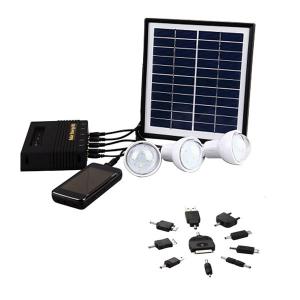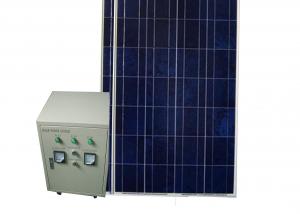CNBM Solar Home System CNBM-K9 (10KW)
- Loading Port:
- China Main Port
- Payment Terms:
- TT or L/C
- Min Order Qty:
- 1 set set
- Supply Capability:
- 1000 sets per month set/month
OKorder Service Pledge
OKorder Financial Service
You Might Also Like
Brief Introduction of Solar Energy System CNBM-K9 (10KW)
CNBM Home System-K9 (10KW) has a wonderful capacity.It can be used in factory,home,school and other CNBM Home System-K9 (10KW) consist of the solar modules,charge controller,inverter and battery banks.
CNBM International is highly recognized by its business partners and clients all over the world and has obtained rapid development under the spirit of win-win .
With CNBM Home System-K9 (10KW),
We will carry on the mutual beneficial,innovative and revolutionary trading structure as we did before,create value for our employees,share holders and clients and benefit the whole society in our future development.Please contact us ,if you have interest in CNBM Home System-K9 (10KW),don’t hesitate!
The Sketching of Solar Energy System CNBM-K9 (10KW)
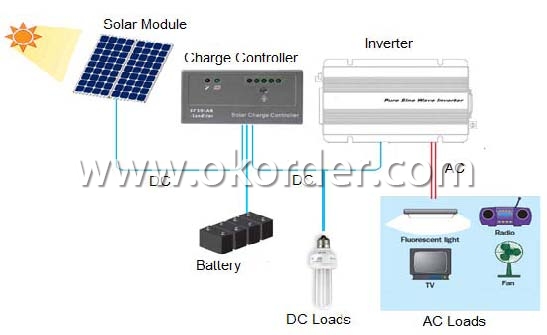
Components of Solar Energy System CNBM-K9 (10KW)
PV Array:
Convert sunlight instantly into DC electric power. Formed by the solar modules (also called photovoltaic modules) in accordance with the system requirements for series and parallel.
Solar Charge Controller:
A charge controller may be used to power DC equipment with solar panels. The charge controller provides a regulated DC output and stores excess energy in a battery as well as monitoring the battery voltage to prevent over charge or over discharge. An inverter can be connected to the output of a charge controller to drive AC loads.
Inverter:
Converts DC output power of photovaltaic soalr panels into standard AC power for use in the local off-grid electrical network. It is a critical component in a photovoltaic system, allowing the use of ordinary commercial appliances.
Battery banks:
Stores energy when there is an excess coming in and distribute it back out when there is a demand. Solar PV panels continue to re-charge batteries each day to maintain battery charge.
Technical data of Solar Home System CNBM-K9 (10KW) | ||
Inverter | Rated load power | 10KW |
Output wave | Pure sine wave | |
Output voltage | DC 220V | |
Output frequency |
AC:220V | |
Precision of output | 50HZ/60HZ | |
Precision of output frequency | ±0.04HZ | |
Solar panel | Pmax | 200W*55PCS |
Vmp | 26.84V*11 | |
Imp | 7.45A*5 | |
Charger | Charger voltage & current | 220V /50A |
Battery | Capacity | 12V /150AH*18*2PCS |
Support | Aluminum | 11PCS/SET*5 |
Power box | Spray paint iron box,with input,output,ammeter,voltmeter,master swith and so on. | |
Package of Solar Home System CNBM-K9 (10KW) | ||||
Part | Size(L*W*H mm) | Weight(kg) | 20’(pcs) | 40’(pcs) |
Power box | 500*550*1500 | 190 | 6 Sets | 8 Sets |
Solar panel | 1482*992*40 | 960 | ||
Battery | 1100*520*650*4 | 2200 | ||
Factory Picture of Solar Energy System CNBM-K9 (10KW)
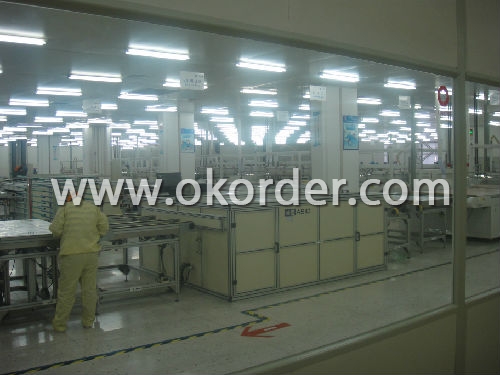
Package Picture of Solar Energy System CNBM-K9 (10KW)

- Q: Can solar energy systems be used in areas with limited roof space due to chimneys or vents?
- Indeed, solar energy systems can still function effectively in areas where roof space is restricted due to chimneys or vents. Although solar panels typically require unobstructed roof space to achieve optimal efficiency, there are alternative solutions accessible for areas with limited roof space. One feasible approach involves installing solar panels on adjacent flat or sloped surfaces, such as the ground or a nearby wall. These ground-mounted or wall-mounted solar systems can be adjusted to maximize exposure to sunlight, ensuring that the panels generate a substantial amount of energy. Another solution entails utilizing solar technologies specifically designed for limited roof space. For instance, solar tiles can be seamlessly integrated into the roof itself, replacing conventional roofing materials while simultaneously harnessing solar energy. These solar tiles can be installed around chimneys, vents, or any other obstructions on the roof, efficiently utilizing the available space. Furthermore, solar energy systems can be combined with other renewable energy sources, such as wind turbines or geothermal systems, to compensate for the limited roof space. By diversifying the sources of renewable energy, it becomes possible to meet the energy requirements of an area even with restricted roof space. In conclusion, despite the challenges posed by limited roof space due to chimneys or vents, there are still viable options for employing solar energy systems. By exploring alternative mounting options, utilizing solar tiles, or combining solar with other renewable energy sources, it becomes feasible to harness solar power in areas with restricted roof space.
- Q: How do solar energy systems impact the overall energy independence of a building?
- The overall energy independence of a building can be significantly influenced by solar energy systems. These systems harness the power of the sun to produce clean and renewable energy, thereby decreasing dependence on traditional fossil fuel sources. This transition to solar energy enables buildings to become more self-sufficient and less reliant on the grid for their energy requirements. A key aspect of solar energy systems is their capacity to generate electricity. By installing solar panels on rooftops or in open spaces, buildings can generate their own electricity, reducing the need to purchase it from external sources. This not only lowers energy costs but also provides a reliable source of power that is not affected by price fluctuations or supply disruptions. With a properly sized solar system, a building can potentially fulfill all or a significant portion of its electricity demand. Additionally, solar energy systems often offer storage options such as batteries, allowing excess electricity produced during the day to be stored for use at night or during cloudy periods. This feature enhances the resilience of the building's energy supply and further reduces reliance on the grid. In addition to electricity, solar energy systems can also meet the heating and cooling requirements of a building. Solar thermal systems utilize the sun's energy to heat water or air, which can then be utilized for various purposes, including space heating, hot water supply, or even air conditioning. By utilizing solar thermal technology, buildings can decrease their reliance on traditional heating and cooling systems powered by fossil fuels or electricity. Moreover, solar energy systems have a positive environmental impact. By replacing conventional energy sources with clean and renewable solar energy, buildings can significantly reduce their carbon footprint and contribute to the mitigation of climate change. This shift towards clean energy also helps in reducing air and water pollution associated with traditional energy generation methods. In conclusion, solar energy systems are essential in improving the energy independence of a building. By generating electricity and providing heating and cooling options through clean and renewable solar energy, buildings can decrease their reliance on external energy sources, lower costs, enhance resilience, and contribute to a more sustainable future.
- Q: Can solar energy systems be used in powering research laboratories or scientific facilities?
- Certainly, research laboratories and scientific facilities can utilize solar energy systems to provide power. Solar energy is a sustainable and renewable power source that can be harnessed through the utilization of photovoltaic (PV) panels or solar thermal systems. To power various equipment such as microscopes, spectrometers, centrifuges, and other specialized scientific instruments, research laboratories and scientific facilities often require a substantial amount of electricity. By installing solar panels on the roofs or surrounding areas of these facilities, they can generate electricity from sunlight. The electricity generated by solar panels can directly power the laboratory's equipment, reducing their dependence on traditional fossil fuel-based electricity sources. Furthermore, any excess energy produced by the solar panels can be stored in batteries or returned to the grid, ensuring a continuous and reliable power supply. Using solar energy in research laboratories and scientific facilities offers several advantages. Firstly, it helps diminish greenhouse gas emissions and mitigates the environmental impact of these facilities. Solar power is clean and does not generate harmful pollutants, making it an environmentally friendly substitute for conventional electricity sources. Additionally, solar energy systems can provide a stable and cost-effective power source in the long term. While the initial installation costs may be higher, solar panels have a lengthy lifespan and require minimal upkeep. This can result in significant savings on electricity bills over time, enabling research laboratories and scientific facilities to allocate their resources towards other essential research activities. Moreover, solar energy systems can enhance the resilience and reliability of power supply to these facilities. In regions prone to power outages or with unreliable electricity grids, solar panels combined with battery storage can serve as a backup power source, guaranteeing uninterrupted operation of critical scientific equipment. In conclusion, solar energy systems can indeed be utilized to power research laboratories and scientific facilities. They offer numerous environmental, economic, and operational advantages, making them a feasible and sustainable choice for meeting the energy requirements of these vital scientific institutions.
- Q: Can solar energy systems be used to power boats or yachts?
- Indeed, boats or yachts can utilize solar energy systems for their power needs. By installing solar panels on the boat's roof or deck, sunlight can be captured and converted into electricity. This electrical energy can then be utilized to operate various systems onboard, including lighting, navigation equipment, communication devices, refrigeration, and even propulsion systems. The size and capacity of the solar energy system will be determined by the boat or yacht's specific power requirements and the available installation space. Opting for solar-powered boats and yachts offers numerous advantages, including decreased reliance on fossil fuels, lowered operational expenses, quieter operation, and reduced carbon emissions. However, it is important to acknowledge that solar energy alone may not suffice for larger vessels or extended periods of low sunlight. In such instances, a hybrid system that combines solar energy with alternative power sources, like wind or diesel generators, may be more suitable.
- Q: Can a solar energy system be installed on a hospital or healthcare facility?
- Yes, a solar energy system can be installed on a hospital or healthcare facility. In fact, many hospitals and healthcare facilities around the world have already implemented solar energy systems as a way to reduce their carbon footprint and lower their energy costs. Solar panels can be installed on the rooftop of the facility or in an adjacent open space, depending on the available area. These systems can generate electricity from sunlight, which can be used to power various operations within the hospital, including lighting, heating, and cooling systems, as well as medical equipment. The use of solar energy not only helps the facility save on energy costs but also promotes sustainability and environmental responsibility. Additionally, solar energy systems can provide a reliable and independent source of power, which can be crucial during emergencies or power outages, ensuring uninterrupted healthcare services.
- Q: How is solar energy stored for later use?
- Various methods exist for storing solar energy for later use. One widely employed approach involves the utilization of solar batteries or energy storage systems. These batteries become charged during daylight hours, when excess solar energy is being generated. Subsequently, the stored energy can be utilized during periods of limited or no sunlight, such as nighttime or cloudy days. An alternative means of storing solar energy is through the adoption of thermal energy storage systems. These systems convert solar energy into thermal energy, which is then stored in a medium like water or molten salt. This stored thermal energy can subsequently be utilized to produce electricity or heat whenever necessary. Moreover, solar energy can be indirectly stored through the utilization of pumped hydroelectric storage. Excess solar energy is employed to pump water from a lower reservoir to a higher one. When electricity is required, the stored water is released and flows down to a lower reservoir, generating electricity via turbines. In addition, solar energy can also be stored in the form of compressed air. Excess solar energy is utilized to compress air into storage containers. When electricity is needed, the compressed air is released and expanded through turbines, generating electricity. In conclusion, the storage of solar energy for future use plays a critical role in ensuring a consistent and uninterrupted power supply. These storage methods enable us to maximize the advantages of solar energy and overcome the challenges posed by its intermittent availability.
- Q: Can solar energy systems be used for powering hotels?
- Yes, solar energy systems can certainly be used for powering hotels. Solar panels can be installed on the rooftops or surrounding areas of hotels to harness sunlight and convert it into electricity. This renewable energy source can help hotels reduce their reliance on traditional grid electricity, lower operational costs, and contribute to a more sustainable and eco-friendly approach to power generation.
- Q: Can a solar energy system be financed through a loan?
- A loan can be used to finance a solar energy system. Numerous financial institutions provide loans specifically for renewable energy projects, such as solar energy systems. These loans are intended to assist individuals and businesses in covering the initial expenses of purchasing and installing solar panels and associated equipment. In certain instances, these loans may be secured by the solar energy system itself, permitting the lender to assume ownership if the borrower fails to repay the loan. The terms and conditions of these loans will vary based on the lender, but they generally offer competitive interest rates and flexible repayment choices. Furthermore, there might be several government incentives and tax credits accessible to further reduce the cost of financing a solar energy system. All in all, financing a solar energy system through a loan can be a feasible and financially beneficial choice for those interested in investing in renewable energy.
- Q: What is the role of solar cookers in solar energy systems?
- The role of solar cookers in solar energy systems is to harness the power of the sun to cook food, reducing the reliance on traditional cooking methods that use fossil fuels. Solar cookers help to promote sustainability and reduce greenhouse gas emissions, making them an important component of solar energy systems.
- Q: Can solar energy systems be used in historical or protected buildings?
- Yes, solar energy systems can be used in historical or protected buildings. In fact, incorporating solar energy systems into such buildings can be a smart and sustainable solution. While the installation of solar panels on historical or protected buildings might require careful planning and consideration, it is certainly possible to preserve the integrity and aesthetics of the architecture while benefiting from renewable energy sources. One approach to installing solar energy systems on historical or protected buildings is by using integrated solar panels. These panels are designed to blend seamlessly with the building's design and are installed in a way that does not alter the historical features. This can be achieved by placing the solar panels on flat roofs, using solar tiles, or installing solar panels on less visible parts of the building, such as the rear or sides. Another consideration when installing solar energy systems on historical or protected buildings is the preservation of the building's structural integrity. This can be done by employing non-penetrating mounting systems that do not require drilling or damaging the building's structure. Additionally, consultation with architects, engineers, and preservation experts is crucial to ensure the installation process adheres to any preservation guidelines or regulations. By embracing solar energy systems, historical or protected buildings can become more sustainable and reduce their carbon footprint. Solar panels can provide a clean and renewable source of electricity, reducing dependence on fossil fuels and decreasing greenhouse gas emissions. Moreover, solar energy systems can often generate enough power to meet the energy needs of these buildings, making them self-sufficient and potentially even providing surplus energy that can be fed back into the grid. In conclusion, solar energy systems can indeed be used in historical or protected buildings with careful planning and consideration. By utilizing integrated solar panels and consulting with preservation experts, it is possible to harness the benefits of renewable energy while preserving the architectural and historical value of these buildings. This approach not only ensures a sustainable future but also showcases the harmonious coexistence of modern technology and historical preservation.
Send your message to us
CNBM Solar Home System CNBM-K9 (10KW)
- Loading Port:
- China Main Port
- Payment Terms:
- TT or L/C
- Min Order Qty:
- 1 set set
- Supply Capability:
- 1000 sets per month set/month
OKorder Service Pledge
OKorder Financial Service
Similar products
Hot products
Hot Searches
Related keywords



